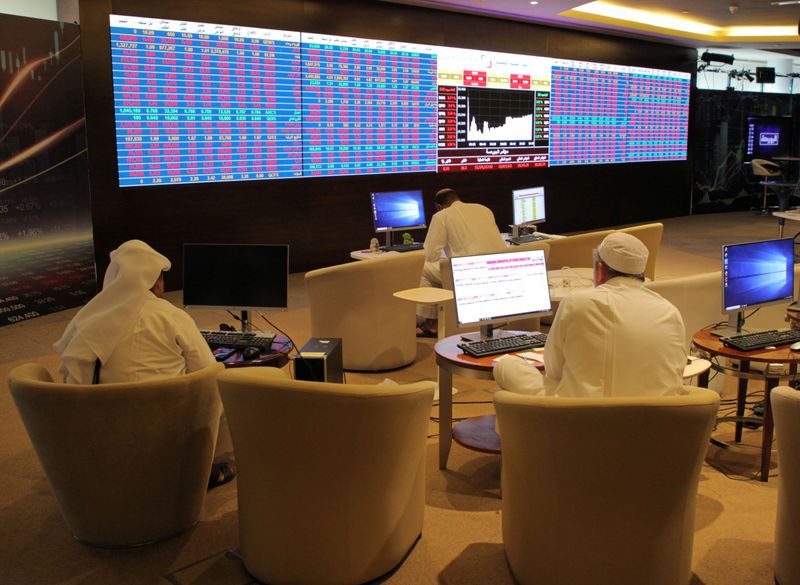This post was originally published on this site
https://i-invdn-com.akamaized.net/trkd-images/LYNXMPEG070QP_L.jpg
By Saeed Azhar and Davide Barbuscia
DUBAI (Reuters) – Saudi Aramco (SE:) shares fell to a new low on Wednesday after Iran launched missiles against U.S. targets in Iraq, but Gulf debt markets were fairly stable, as some had feared stronger retaliation from Iran.
Saudi Aramco opened at 34 riyals ($9.06), its lowest since it began trading on Dec. 11, putting the market value of the company at around $1.8 billion, down from a peak of $2.06 trillion on Dec 12.
Aramco’s shares fell in the final couple of weeks of 2019 because reality kicked in among investors, but the recent weakness was caused by geopolitical tensions, said Jason Tuvey, a senior emerging markets economist at Capital Economics.
Aramco shares are down almost 12% from a high of 38.70 riyals on Dec. 12, but still above the IPO price of 32 riyals, which valued the company at $1.7 trillion.
Gulf stocks were also pulled down by the conflict between the United States and Iran, which attacked U.S. targets in Iraq on Wednesday after a U.S. drone strike last week killed the Iranian commander Qassem Soleiman.
But bonds issued by Gulf governments were fairly stable, and credit default swaps – used to insure against the risk of a sovereign debt default – were unchanged.
“The Iran retaliation seems to be a non-escalation, which is why the markets are not widening. I think once this is confirmed, we might see a small relief rally in the region,” said Zeina Rizk, director of fixed income asset management at Dubai’s Arqaam Capital.
Bonds issued by Saudi Arabia – Iran’s regional foe – were only marginally weaker, particularly on the long end of the curve. Five-year CDS conventional spreads were up only 1 basis point, according to IHS Markit.
Aramco said on Tuesday Goldman Sachs (NYSE:) may stabilize its shares, but so far no price stabilization transaction have occurred since the stock began trading. The stabilization period ends on Thursday.
Aramco raised $25.6 billion in its IPO, making it the biggest flotation in the world, exceeding Alibaba Group’s (N:) $25 billion deal in 2014. But foreign investors were wary of investing in Aramco because of concerns over valuations.
“The tensions between the United States and Iran is one of the risks people saw with concentrated operations in the Middle East,” said Oswald Clint, senior analyst at Sanford C. Bernstein.
Aramco’s facilities were attacked in September in a strike that temporarily shut down 5.7 million barrels per day of output – more than 5% of global oil supply.
Morningstar, which initiated its coverage of Aramco last month, said its fair value of Aramco was $1.4 trillion.
Fusion Media or anyone involved with Fusion Media will not accept any liability for loss or damage as a result of reliance on the information including data, quotes, charts and buy/sell signals contained within this website. Please be fully informed regarding the risks and costs associated with trading the financial markets, it is one of the riskiest investment forms possible.

